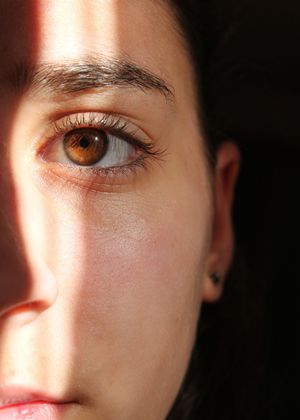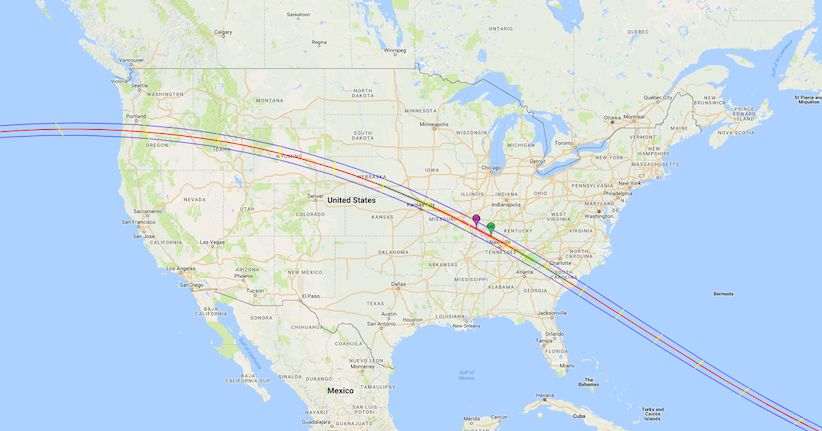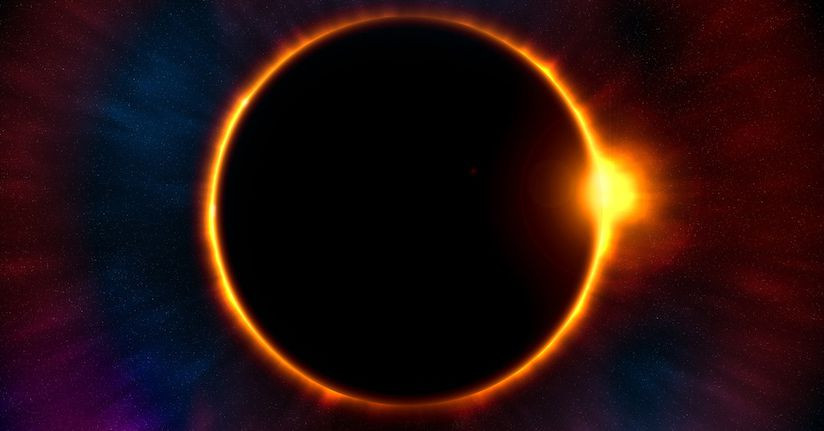The Solar Eclipse And Its Threat To Your Eyes
Monday, August 21, 2017 is the day that a once-in-100 years event will grace our planet: a total solar eclipse, whereby the moon will be in perfect position so as to completely cover the sun. It's an amazing phenomenon, but it also comes with a warning. Elated sky watchers must understand that viewing a solar eclipse with unprotected eyes can cause painful damage to your vision. This also makes individuals with light sensitivity particularly susceptible to worsening symptoms due to exposure.. We discuss some of the tips to stay safe during this rare event.
Note: We want to make clear that TheraSpecs outdoor glasses are NOT verified eclipse glasses. Wearing them to view the solar eclipse may cause damage to your eyes.
Eye concerns during the eclipse
You shouldn’t be surprised to learn that staring at the sun—even for a just a few seconds at a time—can result in severe damage to your eyes. Two of the chief medical concerns are photokeratitis and solar retinopathy, and both can lead to vision-related problems including light sensitivity and photophobia.

Photokeratitis
Think of photokeratitis as the equivalent of a sunburn on your eyes. Sounds painful doesn't it? The injury occurs on the front surface and is the result of insufficient protection during prolonged exposure to natural or artificial lighting. Symptoms of photokeratitis include:
- Eye pain and inflammation
- Watery, red or distressed eyes
- Swelling in and around the eye
- Blurred vision
- Light sensitivity or photophobia
- Ocular burning
Much like a sunburn, you may not even notice any issues until several minutes or hours after exposure. Ironically, the recommended relief strategy for photokeratitis mimic those who also experience light sensitivity—a dark room or sunglasses. TheraSpecs would also be a great option to reduce the photophobia as well as any potential migraine or post-concussion symptoms brought on by the exposure. In addition, experts suggest to avoid rubbing or touching the eyes as well as removing any contact lenses.
Solar retinopathy
Solar retinopathy refers to damage to the center of the eye's retina as the result of prolonged over-exposure to the sun's radiation. The center of the retina is where we find the sharpest vision so damage here is critical, and it can even be permanent and irreversible. This is especially troublesome for patients with migraine because there is existing evidence that they may already have an increased risk for retinal impairment. Thus, the upcoming solar eclipse could potentially worsen the issues associated with the headache disorder. Symptoms of solar retinopathy—which usually affects both eyes—include:
- Blurred vision
- Loss of vision or a blind spot in the normal vision range
- Painful sensitivity to light
- Headaches or migraine attacks
- Eye soreness or pain
As this condition can lead to more severe health issues even than photokeratitis, it is encouraged to visit your eye doctor for treatment.

The above image shows the direct path of the solar eclipse, where it will be visible in full.
How to protect your eyes during a solar eclipse
We can’t stress it enough: Never look directly at the sun, even in short bursts, as it could lead to irreversible complications to your eyes. That said, when the moon completely shields the sun, it is acceptable to view without any specific eye protection; however, most residents in the continental United States will only be able to witness a partial eclipse. This means that a portion of the sun will be visible for the duration of the eclipse, and, thus, at no time will they be able to look upon it unprotected.
As mentioned above, TheraSpecs indoor or outdoor glasses are NOT acceptable glasses for the eclipse. Sunglasses (even polarized pairs) are also not safe, and stacking multiple pairs will still not make them dark enough. But there are a few options available:
You can use certified eclipse glasses
Yes, these are actually a thing, and NASA even offers some great tips for finding and using reputable eclipse glasses that are safe for viewing.
You can wear welder’s glasses no. 14
These are the darkest available welder’s glasses that you can wear during a solar eclipse. Similarly, you want to source these from a reputable vendor.
You can create a pinhole projector
If you’re interested in a fun, do-it-yourself project with the family, you can create a pinhole camera to project the amazing show.
You can view it through your smartphone screen
It’s not acceptable to utilize the viewfinder of a camera or a cheap telescope, but you can utilize your smartphone or mobile device. Simply point it (most likely in ‘selfie’ orientation) at the eclipse and only look at the screen. Video mode may also give you better results...and it won’t fry your phone either, although experts still recommend having some eye protection as a precaution.
You may be able to participate at your local library
The STAR Library Education Network, which supports technology and science as an educational tool, distributed millions of eclipse glasses to libraries all over the country. Check online to see if yours was one of the lucky recipients.
If you take precautions like those described above, you can enjoy the solar eclipse experience without harmful effects.
TheraSpecs Glasses for Your Health
Try our therapeutic glasses and get relief for issues triggered by light, such as migraines, headaches, photophobia, concussion symptoms, seizures, eye health, and sleep.





